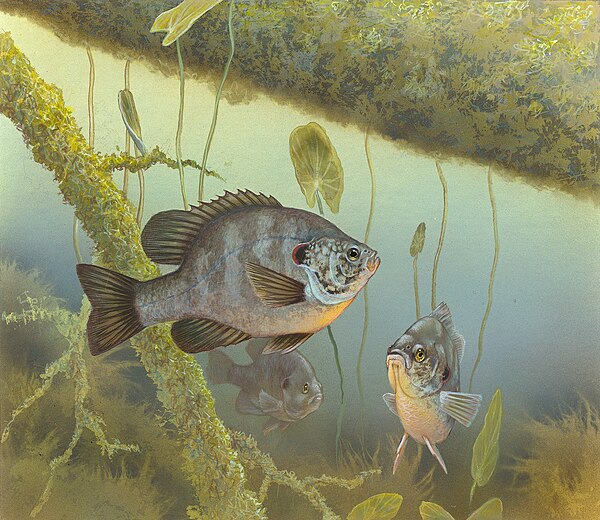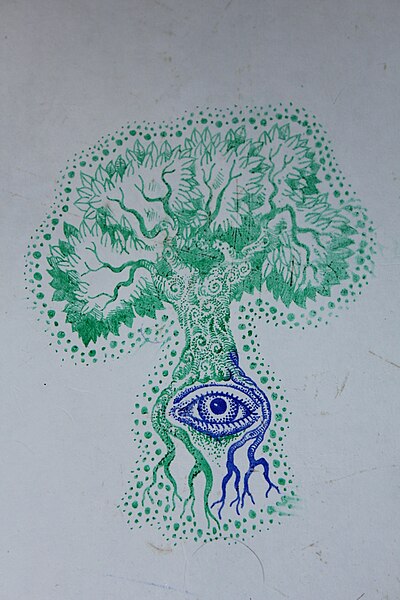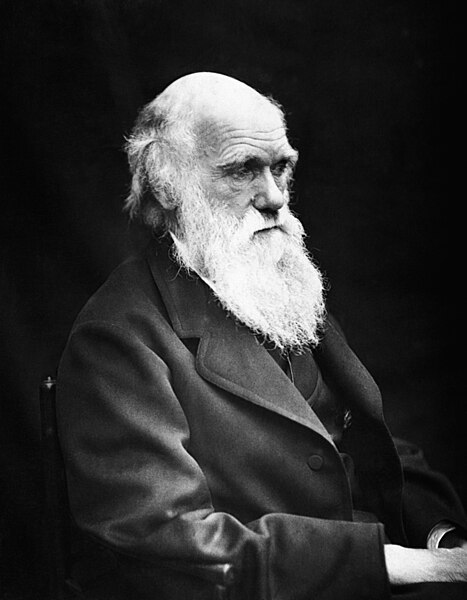Thursday, December 22, 2011
Prejudice Comes from a Basic Human Need and Way of Thinking, New Research Suggests
Where does prejudice come from? Not from ideology, say the authors of a new paper. Instead, prejudice stems from a deeper psychological need, associated with a particular way of thinking. People who aren't comfortable with ambiguity and want to make quick and firm decisions are also prone to making generalizations about others. - Science Daily
Wednesday, December 21, 2011
A Multilayered Anti-Pattern
The problem is that we are adapting to the wrong things — to images, or to short-term greed, or to the clutter of mechanics. These maladaptations are known as “antipatterns” — a term coined not by Alexander, but by software engineers. An antipattern is something that does things wrong, yet is attractive for some reason (profitable or easy in the short term, but dysfunctional, wasteful of resources, unsustainable, unhealthy in the long term). It also keeps re-appearing. Sounds like our economy and wasteful lifestyle? - Michael Mehaffy and Nikos Salingaros
 |
| CC Gjøvik, an example of a multilayered antipattern |
The permaculture focus is on tracking patterns in nature and design, to create pleasure for ourselves and to find good examples for the world. Patterns work in a multitude of connections with their surroundings, and the more connections there are, the richer are the pattern languages the patterns are part of.
Unfortunately, although our pattern languages might have a deep poetry, not all people feel attracted to their harmony (meaning "the quality without a name"). Today’s disconnected people are attracted by antipatterns, this is because they are profitable or easy in the short term, and human nature is greedy and lazy. We are short term thinkers — in a world of competition the winner takes it all, and today’s capitalism is all about materialism.
Antipatterns are dysfunctional, wasteful of energy and resources, unsustainable and unhealthy in the long term, and they violate the human scale. Still, they are so seductive in their grand scale, and we are overwhelmed by their appearance and shiny surfaces. In fact, we have even made them our new temples!
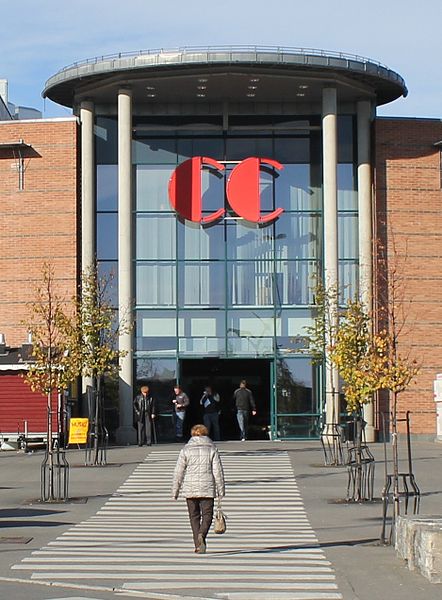 |
| Entering the consumerist temple |
Monday, December 19, 2011
Self-Organization
 |
| Photo: Takemori39 |
One definition of self-organization: “Self-organization is the spontaneous often seemingly purposeful formation of spatial, temporal, spatiotemporal structures or functions in systems composed of few or many components.” Self-organization is visible in many cases in nature. Self-organizing systems are adaptive and robust. They can reconfigure themselves to changing demands and thus keep on functioning in spite of perturbations. - P2P-blog
No doubt, self-organization is the future of mankind and the end of today's totalitarian democracies!
Real Wealth: Howard T. Odum’s Energy Economics
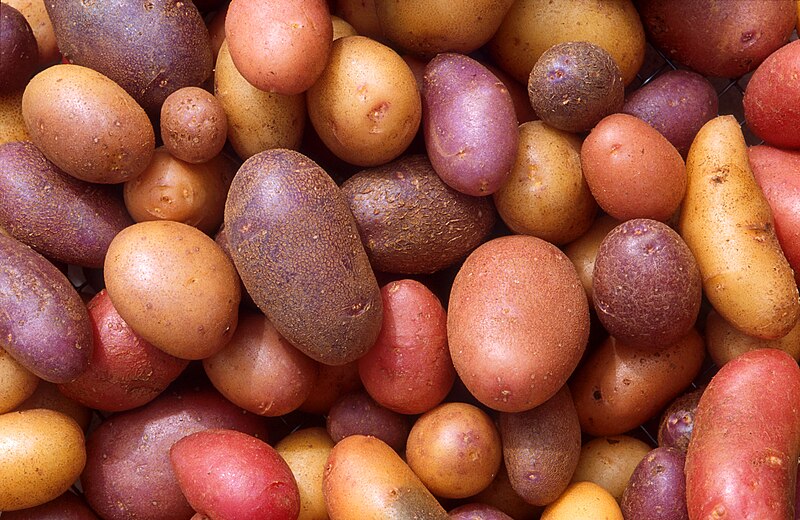 |
| An oil product |
The great conceit of Industrial man imagined that his progress in agricultural yields was due to new know-how... A whole generation … thought that the carrying capacity of the earth was proportional to the amount of land under cultivation and that higher efficiencies in using the energy of the sun had arrived. This is a sad hoax, for industrial man no longer eats potatoes made from solar energy; now he eats potatoes partly made of oil. - Howard T. Odum
Read the article: Real wealth: Howard T. Odum’s energy economics
Monday, December 12, 2011
Friday, December 9, 2011
ECONOMY: Ecological Economics by Joshua Farley
EXCERPT:
Many people would agree that the central desirable end of economic activity is a high quality of life for this and future generations. Conventional economists argue that humans are insatiable, and therefore economics should focus on endless economic growth and ever-increasing consumption. Considerable evidence, however, suggests that humans are in fact satiable-there is a point beyond which increasing consumption does not make us better off.
Market economies—in which the prices of goods and services are determined by the interplay of supply and demand in voluntary exchanges—play a critical role in the modern world. Market forces determine the quantity of oil pumped, minerals mined, forests cut, and fish caught. They determine the industries to which these resources are allocated, how much labor and capital are employed to convert them to market products, and who gets to consume those products.
In theory, competitive markets1 allocate factors of production—resources like energy, raw materials, land, labor, and capital—toward the most profitable goods and services and, in turn, allocate the goods and services toward those who value them the most, as measured by their willingness to pay. The competitive markets described in textbooks in theory maximize monetary value while ensuring that consumers are able to purchase market products as cheaply as they can be produced. What’s more, competitive markets achieve all this through a process based on free choice and decentralized knowledge, without centralized coordination.
The Great Depression, however, revealed huge flaws in market economic theory. Markets sometimes left vast numbers of skilled laborers unemployed, left machinery idle, and left food to rot on farms while the poor went hungry. The Great Depression helped economists understand that sometimes markets required government intervention to function well and to allocate resources appropriately. Confronted with this crisis, economists developed the field of macroeconomics, which explained how governments could use monetary and fiscal policies to keep economies healthy and growing.
When macroeconomics emerged, however, practically no one was aware of the coming challenges of global climate change, peak oil, biodiversity loss, resource depletion, or overpopulation. Economists focused on the problem of how to convert seemingly abundant natural resources into apparently scarcer economic goods and services. Since then, production of economic goods and services has increased more than eighteenfold in the United States, and nearly as much in the world as a whole. We have learned that intact ecosystems provide vital life-support functions upon which we, like all other species, depend for our survival, and that human activities threaten the planet’s ecosystems.
Unfortunately, market systems largely fail to account for the impacts of ecosystem degradation on human welfare. The ecological and resource crises we currently face are orders of magnitude more serious than the Great Depression, as they threaten not only the economic system but also human survival. We must develop a new type of economics that addresses these shortcomings.
Read the full report:
Thursday, December 8, 2011
Wednesday, November 30, 2011
Lake Randsfjorden & Dokkadeltaet National Wetland Center
 |
| The northern end of Lake Randsfjorden in Oppland, Norway. The wetlands of the Dokka Delta is situated here, where the river meets the lake. Full resolution available here. |
North of Oslo, west of Lillehammer and south of the highest mountains in Norway, Jotunheimen, water drains through mires, creeks and rivers into the ramsar site and nature reserve, Dokkadelta. The water from the alpine mountain region Synnfjell runs through the protected river Etna and through the river Dokka, passing several aqua power stations, into the fourth biggest lake of Norway, Randsfjord. Wetlands, creeks, rivers, forest and vast alpine mountains invite to experience the landscape of the municipalities Northern Land, Southern Land and Etnedal in the county of Oppland.
Dokkadelta National Wetland Centre has got the task to develop this compact ecosystem for experiencing the strong bonds to nature in the culture of this region. But also protecting the biological diversity of this typical nordic wetland ecosystem for further generations. Nature, where the black throated diver calls on the foggy lake at dawn, and the capercaillie play games on the mires at spring. Where pike and trout grow to capital size, moose is resting in the meadows and the trumpet of cranes sounds through the valley. Where the full moon paints the winter forest in silver blue and ski trails wind through the mountains of silence. Where beaver and men work in the forest and river shells tell their stories of the century. An ecosystem for knowledge and experiences.
We wish you welcome to visit our region. On a journey to our birds, our animals, our fish, our plants, our insects and us, the people of Land and Etnedal. For experiencing fjell, rivers or taiga forests. For the adventure of dog sledding, bird watching, canoeing, hiking, cycling, fishing, hunting, picking berries, backcountry skiing or wilderness camping. Or for sensing the nordic nature on a chair of experiences?
Novalis wrote: "If you hear the butterfly laugh, you know how a cloud smells.
Thursday, November 24, 2011
A Response from VillageTowns
A response from VillageTowns:
We were delighted to read the review of our VillageTown work and would like to add some comments, but your comments section is closed.
Øyvind Holmstad wrote "Unfortunately they don’t seem have the same enthusiasm for the compost toilet, but hopefully they’ll take this advice from Lester Brown."
 |
The first point of agreement is that urine and faeces are not waste but surplus material. They have chemical and nutrient value, and it is an absurd waste to contaminate drinking water to shift them or to co-mingle them. Get them to the production centre in as pure a form as possible - as pure as they came out of the human body. To do this, first look at the Swedish separator toilets. Install two pipes, one for urine and the other for faeces. Use water or an equivalent medium to transport these surplus materials to the processing plant. At the plant, use appropriate technology to deal both with the medication issue (antibiotics, birth control and other medications expelled by the body) and the heavy metal issue that otherwise could concentrate these harmful or toxic chemicals in the food systems. Determine what nutrients are used for farm fertiliser (for example, feeding tilapia fish that are then ground up for fertiliser and mixed with food compost) and what may be used to brew alcohol that powers the farm tractors. Using biological systems, purify the transport water to a quality deemed safe to then return to the toilet so that it functions in a closed loop system much like the radiator in a modern car. Once charged, the system uses no new water, it just uses water as the transport system.
Beyond the two toilet pipes, we imagine more water pipes coming out of each home. Pipes are a lot cheaper than trucks, and once installed can last for centuries and require no personnel or vehicles. Install a pipe that goes to the kitchen sink, and install something akin to the old-fashioned garbage disposal for food scraps. Pipe those ground-up scraps to the food compost processing plant where they are higher quality surplus materials for compost, fertiliser or brewing stock for fuel. Don't use drinking water to run the disposal unit, but have an automatic feeder pipe below the sink that uses grey water. Have another pipe that comes from the roof to collect clean storm water, direct this to a reservoir. Instead of washing machines in every home, provide local laundries for villagers that uses closed loop water systems. This is especially important in places like Australia which just came off a ten-year drought.
In all of these ideas, do note that the decisions are not made in an ivory tower, or by the VillageTown Stewards as know-it-alls. Rather they are made when the funds have been raised and the project begins. They are made by scientists and engineers who are given a set of principles instructing them to find the best, smartest, most sustainable methods for solving age-old problems. The sad fact is that some of the best ideas out there get no funding because the system is too closed minded. The VillageTown approaches the industry with an open-mind, seeking the best solutions the market has to offer, and it does so with funds.
On another subject, thanks for the heads-up on "Alexander’s latest achievement, Generative Codes." We'll make sure it gets in there. Actually, we hope that when we get funding that Christopher Alexander and some of his co-authors may consider becoming consultants to the first project. There are some outstanding experts and many are happy to help, if we have the funds to pay them.
VillageTown Stewards
Related reading:
Saturday, November 19, 2011
Geospatial Analysis and Living Urban Geometry
 |
| Suburban garden. Photo: Philip Talmage |
Read the essay by Nikos A. Salingaros et.al.: Geospatial Analysis and Living Urban Geometry
Friday, November 18, 2011
Just Another Failed "Tower in the Park" (at Grefsen Station, Oslo)
By the way, the main investor of this project is ROM Eiendom, the same company that is given the task to develop the new Oslo Central Station area. I guess you can see the same flawed typologies: From Stone Desert to Glass Desert.
(Typologies like just a hole in the wall for windows to empathize the machine age, the windows exactly wrong to make the building "exiting", vertical pull design etc.)
Poor urbanism continues to be practiced, enthusiastically supported by the universities, because both private developers and city governments refuse to accept the scientific basis of good urbanism. They continue to listen to academic experts who dismiss human-scale solutions so as to promote their own ideologically-based mechanistic fantasies. - Nikos Salingaros
Thursday, November 17, 2011
Vi har gjort nok ugagn nå
 |
| Bjørvika er et eksempel på kald, kynisk eiendomsutvikling. Utbyggingen er foreldet før den er ferdig, skriver kronikkforfatteren. FOTO: Rolf Øhman |
Gi meg en inviterende, nedskalert, menneskelig byorganisme, der det gode byliv kan utfolde seg. De høye egoistiske seg selv-nok bygningene burde vi være ferdige med. - Niels A. Torp
Translated: Give me an inviting, down scaled, human city organism, where the pleasures of city life can unfold. The high, egoistic, its self enough buildings we should be finished with.
Herlig! Til dags dato den beste artikkelen som er skrevet om den pågående raseringen av min kjære hovedstad!
ECONOMY: Money and Energy
Friday, November 11, 2011
Frå ideologi til teknologi
Michael Mehaffy og Nikos Salingaros har for tida ein serie av essay gåande i Metropolis Magazine, dei vert samla her. Eg har inga aning om kor lenge han vil gå - vonleg for alltid. Men same det så er det på høg at denne serien vert introdusert for eit norsk publikum, og eg vil fokusera på dei fyrste fem essaya om teknologiane til Christopher Alexander.
Essaya om Alexander sine teknologiar i kronologisk rekkjefylgje:
Det tjugene hundreåret var ideologiane sitt hundreår, men alt i hop enda i vitlaus konsumerisme. Så det er openbart at ideologiar aleine ikkje har noko godt svar, sjølv om dei kan helde på mang ei sanning og vera ein reiskap for å sameina folk i eit felles krafttak. Lell vert dette fåfengd om folk ikkje har dei rette verktøya, eller endå verre, dei nyttar seg av "dødens teknologiar".
Essaya om Alexander sine teknologiar i kronologisk rekkjefylgje:
- The Radical Technology of Christopher Alexander
- The Sustainable Technology of Christopher Alexander
- The Pattern Technology of Christopher Alexander
- The Living Technology of Christopher Alexander
- The “Wholeness-Generating” Technology of Christopher Alexander
 |
| Mønstre i sand orsaka av ferskvatnsavrenning. Foto: Martyn Gorman |
Det tjugene hundreåret var ideologiane sitt hundreår, men alt i hop enda i vitlaus konsumerisme. Så det er openbart at ideologiar aleine ikkje har noko godt svar, sjølv om dei kan helde på mang ei sanning og vera ein reiskap for å sameina folk i eit felles krafttak. Lell vert dette fåfengd om folk ikkje har dei rette verktøya, eller endå verre, dei nyttar seg av "dødens teknologiar".
The insights we are gaining about these processes are opening the door to a new chapter in design — an era of “bio-design”, “biophilia”, and “biomimicry”. It’s an exciting promise, particularly in an era when our old technologies seem to be failing us. The crude industrial processes that powered our world for a century or more leave us with depletion, fragmentation, and decay. Living systems can show us the way to recover and sustain the damaged systems upon which life depends.
The design theorist Christopher Alexander has argued that similar processes have gone on throughout our own human history, and throughout the history of life itself. Life is a kind of “making” process of unfolding and differentiating production. The “technology of life” is governed by knowable steps. And we had better learn how to apply it, if we are not to be destroyed by the unsustainable technologies that surround us today: what we might call, on strictly scientific grounds, the “technologies of death”. – The Living Technology of Christopher Alexander
"Fractalism" is the Best Model for Future Societies
What a fantastic article by Kevin Carson in today's p2p-blog! This build up under the statement of Nikos Salingaros that every stable system has fractal properties, where the smaller and smaller units outnumber the larger by far in numbers. We have no better way to organize ourselves if we want to become part of nature, something we cannot avoid if we want our societies to survive.
How Much of the Economy is Friction?
Charles Hugh Smith raises the question of how much of the U.S. economy consists of the actual output of goods and services, versus the friction entailed in producing them. As a small example, he cites a physicians’ group that includes ten doctors — and twelve billing clerks.
That’s the general subject of a research paper I did for Center for a Stateless Society (C4SS), The Political Economy of Waste.
The larger and more hierarchical institutions become, and the more centralized the economic system, the larger the total share of production that will go to overhead, administration, waste, and the cost of doing business. The reasons are structural and geometrical.
At its most basic, it’s an application of the old cube-square rule. When you double the dimensions of a solid object, you increase its surface area fourfold (two squared), but its volume eightfold (two cubed). Similarly, the number of internal relationships in an organization increases as the square of the number of individuals making it up.
Leopold Kohr gave the example, in The Overdeveloped Nations, of a skyscraper. The more stories you add, the larger the share of floor space on each story is taken up by ventilation ducts, wiring and pipes, elevator shafts, stairwells, etc. Eventually you reach a point at which the increased space produced by adding stories is entirely eaten up by the increased support infrastructure.
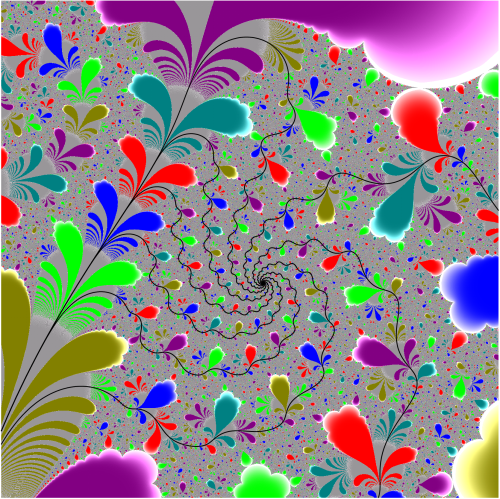 |
| A fractal society will surely blossom! Photo: Dr. L. Rempe |
As the p2p philosophy is a free culture, I reprint the whole article.
That’s the general subject of a research paper I did for Center for a Stateless Society (C4SS), The Political Economy of Waste.
The larger and more hierarchical institutions become, and the more centralized the economic system, the larger the total share of production that will go to overhead, administration, waste, and the cost of doing business. The reasons are structural and geometrical.
At its most basic, it’s an application of the old cube-square rule. When you double the dimensions of a solid object, you increase its surface area fourfold (two squared), but its volume eightfold (two cubed). Similarly, the number of internal relationships in an organization increases as the square of the number of individuals making it up.
Leopold Kohr gave the example, in The Overdeveloped Nations, of a skyscraper. The more stories you add, the larger the share of floor space on each story is taken up by ventilation ducts, wiring and pipes, elevator shafts, stairwells, etc. Eventually you reach a point at which the increased space produced by adding stories is entirely eaten up by the increased support infrastructure.
Do Plants Perform Best With Family or Strangers? Researchers Consider Social Interactions
 |
| Poppies and oilseed rape Poppies and other wild flowers mix in with the crop at the edge of the bridleway |
A growing body of work suggests plants recognize and respond to the presence and identity of their neighbours. But can plants cooperate with their relatives? While some studies have shown that siblings perform best -- suggesting altruism towards relatives -- other studies have shown that when less related plants grow together the group can actually outperform siblings. This implies the group benefits from its diversity by dividing precious resources effectively and competing less. - Science Daily
This small article in Science Daily held some interesting thoughts about the permaculture practise of guilds: Do Plants Perform Best With Family or Strangers? Researchers Consider Social Interactions
Tuesday, November 8, 2011
Brains Come Wired for Cooperation
"What we learned is that when it comes to the brain and cooperation, the whole is definitely greater than the sum of its parts," said Fortune, of the Department of Psychological and Brain Sciences at the Krieger School of Arts and Sciences. "We found that the brain of each individual participant prefers the combined activity over his or her own part." - Science Daily
Read the article at Science Daily: It Takes Two: Brains Come Wired for Cooperation, Neuroscientists Discover
Monday, November 7, 2011
Fyrrig furu i herlig naturhus
 |
| Foto: Bjørn Erik Larsen |
Les artikkelen: De har huset fullt av trær.
Besøk Arkitektkontoret Eik her.
Sunday, November 6, 2011
Saturday, November 5, 2011
Friday, November 4, 2011
Den tredje veg
Les artikkelen til Dave Pollard: All About Power, and the Three Ways to Topple It (Part 1).
Dave Pollard lister i denne interressante analysen opp tre veier for en endring av nåværende verdensorden. Han faller ned på den tredje vei som den beste, å utsulte det nåværende systemet.
Dave Pollard lister i denne interressante analysen opp tre veier for en endring av nåværende verdensorden. Han faller ned på den tredje vei som den beste, å utsulte det nåværende systemet.
The third way to bring about major global change is incapacitation — rendering the old order unable to function by sapping what it needs to survive. This is the method that disease uses to prey on fragile and vulnerable organs, that parasites and venomous creatures use to weaken and sometimes kill their (much larger) hosts, that terrorists use to paralyze their enemies, and that innovative businesses use to undermine, render obsolete and supplant bigger, less flexible businesses. For those of us with neither the patience or religious fanaticism to wait for a global natural catastrophe, nor the naivety to believe in a successful ‘popular’ revolution, this third way is the only way to change, and save, our beleaguered planet.
Meget interressant! Problemet er naturligvis at uten innsikt i Alexanders teknologier vil også denne veien feile. Nettopp derfor er det at jeg har viet mitt liv til å studere disse teknologiene, for å inkorporere dem i permakulturbevegelsen, eller den stille revolusjon, som den også kalles. Utsultingen av nåværende verdensorden må skje gjennom permakulturens utbredelse, og gjennom at denne gjennomsyres av den nye kunnskapen gitt til verden av Christopher Alexander.
Relatert:
Relatert:
Barry Schwartz: The Real Crisis? We Stopped Being Wise
Barry Schwartz makes a passionate call for practical wisdom as an antidote to a society gone mad with bureaucracy. He argues powerfully that rules often fail us, incentives often backfire, and practical, everyday wisdom will help rebuild our world. - TED-Talk
Thursday, November 3, 2011
"I find the ideas in the fractals, both as a body of knowledge and as a metaphor, an incredibly important way of looking at the world." - Vice President and Nobel Laureate Al Gore, New York Times, Wednesday, June 21, 2000, discussing some of the "big think" questions that intrigue him
 |
| An Escheresque fractal by Peter Raedschelders |
Further reading:
Wednesday, November 2, 2011
La oss slippe unaturlig stråling
I Øst–Europa er grenseverdien satt til en 10 000-ende del av den vi har i Vesten. Denne forsiktighet er blitt latterliggjort og forskningsmessig «motbevist» av Strålevernet. Men i mai ga Europarådet anbefaling om å «redusere grenseverdien for innendørs mikrobølgestråling med en faktor på 10 000 i første omgang». I tillegg anbefales å «forby trådløst nett og bruk av mobiltelefon og trådløse fasttelefoner i klasserom og barnehager». Det økende antall barn med hjernesvulster har antagelig bidratt til ny forsiktighet. Her har selv motstand mot babycall blir oversett. Som engasjert i trafikksikring, helseskader ved røyking og bruk av amalgam har jeg, i begynnelsen av slikt helsearbeid, fått høre hvor hysteriske krav om endringer har vært. Som «konspirasjonsteoretiker» gjelder det nå også etter syv års engasjement for de EL–sensitive. - Berit ÅsFor meg er det revnende likegyldig om det er farlig med ikke-ioniserende stråling eller ei, selv om jeg er engstelig for min datter og eksponerer henne minst mulig. Poenget er at det er utrivelig med alt som er unaturlig, også unaturlige elektromagnetiske felt. Dessuten er mastene angstskapende i seg selv!
Tuesday, November 1, 2011
Let's Enter the Fractal World of Christopher Alexander!
In a Freudian sense, we are witnessing the return of the repressed. If you tell people for two decades that there is no alternative to the world in which they live, and if in the meantime you take away their income, their rights, their public services, and their last-remaining shreds of dignity, you can expect that psychological repression of revolutionary potential to come out in some other form sooner or later. If you repress the coherent emancipatory ideology of the masses, as the End of History was meant to do, you literally end up with the incoherent and a-political London riots. In this respect, the most important thing the Tunisian and Egyptian revolutions could have done was to help remind humanity that there actually is an alternative to the status quo — that there does exist some “outside” to unfettered global capitalism. - Jerome RoosPlease read the whole article: Jérôme E. Roos: The year 2011 marks the end of the End of History".
There exist an alternative to ideology, this is permaculture and science. All sustainable systems, all over the Universe and in all natural systems on Earth, are fractal. This is stated by Nikos Salingaros and others. To integrate fractal systems in our societies we must use patterns to form coherent and interconnected pattern languages, using Christopher Alexander’s pattern technology. Further we must replace the dead technologies of the 20th century with living technology, using the living technologies of Christopher Alexander.
Capitalism is anti-fractal, socialism is anti-fractal, so let’s leave all this old stuff behind and enter the fractal world of Christopher Alexander!
 |
| Iterated function system fractal. Vicsek fractal becoming tree. Photo: Edo 555 |
Se verdens største utdødde hakkespett på film
| Original cover painting for October 2011 issue of The Auk by Evaristo Hernández-Fernández, Bartels Science Illustration Program at the Cornell Lab of Ornithology |
Les historien hos Science Daily, eller gå direkte til The Imperial Woodpecker Film.
Sunday, October 30, 2011
How to Get from Here to There?
Michel Bauwens asked Marvin Brown, author of the P2P Foundation Book of the Year in 2010, i.e. of “Civilizing the Economy“, to give us an idea how we can get :from here to there...”
“How do we get from here to there—from where we are to where we want to be? One can imagine a civic economy where economic trends are moving toward making provisions for everyone and ensuring that future generations have the capacities to meet their needs. But how do we get there?
Perhaps we cannot make it. The here is protected by powerful interests. It works quite well for a few. At the same time, there are many, perhaps 5 to 6 billion who would move to “there” at a moments notice if they could. Still, as long as the ownership of property gives legitimacy to rule, it is doubtful if we will see the change that justice and sustainability require.
“How do we get from here to there—from where we are to where we want to be? One can imagine a civic economy where economic trends are moving toward making provisions for everyone and ensuring that future generations have the capacities to meet their needs. But how do we get there?
Perhaps we cannot make it. The here is protected by powerful interests. It works quite well for a few. At the same time, there are many, perhaps 5 to 6 billion who would move to “there” at a moments notice if they could. Still, as long as the ownership of property gives legitimacy to rule, it is doubtful if we will see the change that justice and sustainability require.
The Egyptian uprising, for example, was a sign of hope. They affirmed their human dignity and demanded recognition of their human rights. Western nations joined them not be really supporting democracy, but by interfering with their people’s rule by “economic development” (corporate control). For the West, it seems that capitalism must control democracy instead of democracy controlling capitalism.
The here is the world of ownership; of property management. And the most significant property has become money. Money, the common currency (by common I means that it belongs to us all) that should be available to everyone so we can all participate in an economy of provisioning, has become a property that can be bought and sold as though it were a commodity. Money, as a means of exchange and as a token by which people can pay taxes and support the state, has become the property of banks. As long as we continue to live in the legacy of this Smithian economics of property, we will remain stuck in the “here” of the few enjoying their riches as the expense of the many.
I have no special insight into how we will actually move from here to there. I think I have pinpointed what prevents such a movement: the capitalistic magic of turning everything into a commodity. We are not commodities. Nature is a living system. Money is a provider of credit and a means of exchange. My proposal is that we not only recognize the failure of Smithian economics to create a world for all, but that we also take on the role of global citizen and in conversations with other citizens deliberate about how we move foreword: from here to there.
And what can I do? I can participate in a few of the millions of groups and organizations that are striving to move from here to there. Right now they may not seize the day, but they may quiet the night. In the future, who knows?”
The here is the world of ownership; of property management. And the most significant property has become money. Money, the common currency (by common I means that it belongs to us all) that should be available to everyone so we can all participate in an economy of provisioning, has become a property that can be bought and sold as though it were a commodity. Money, as a means of exchange and as a token by which people can pay taxes and support the state, has become the property of banks. As long as we continue to live in the legacy of this Smithian economics of property, we will remain stuck in the “here” of the few enjoying their riches as the expense of the many.
I have no special insight into how we will actually move from here to there. I think I have pinpointed what prevents such a movement: the capitalistic magic of turning everything into a commodity. We are not commodities. Nature is a living system. Money is a provider of credit and a means of exchange. My proposal is that we not only recognize the failure of Smithian economics to create a world for all, but that we also take on the role of global citizen and in conversations with other citizens deliberate about how we move foreword: from here to there.
And what can I do? I can participate in a few of the millions of groups and organizations that are striving to move from here to there. Right now they may not seize the day, but they may quiet the night. In the future, who knows?”
 |
| Photo: Circus |
Saturday, October 29, 2011
Le Corbusier har vært en større ulykke for verden enn Hitler
 |
| Fra bombingen av Narvik |
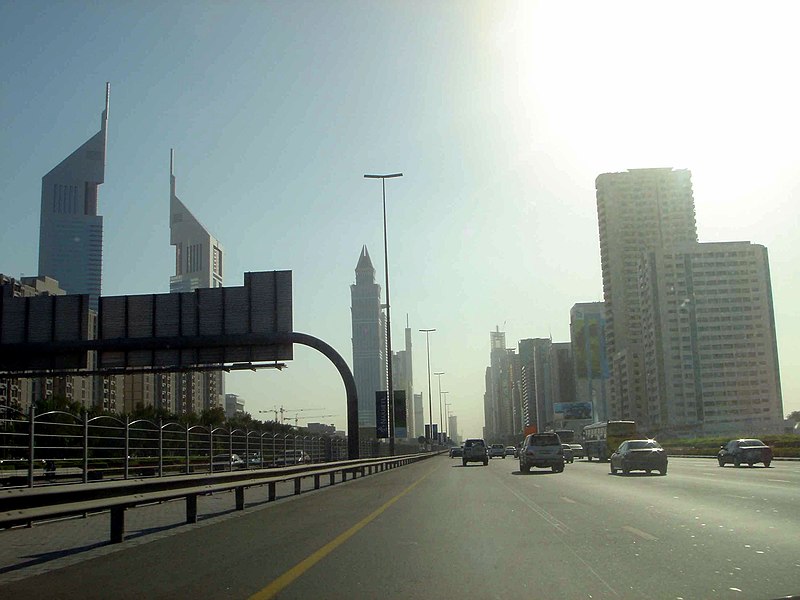 |
| Nok et modernistisk krater! Hva er forskjellen fra ovenliggende bilde? Her fra Dubai. Foto: Andre Engels |
Noen vil hevde at Le Corbusier var et barn av sin tid. Tvert imot! VÅR TID ER ET BARN AV LE CORBUSIER!!!
Les Theodore Dalrymple's essay i City Journal: Do Sties Make Pigs?
Until quite recently, I had assumed that the extreme ugliness of the city in which I live was attributable to the Luftwaffe. I imagined that the cheap and charmless high rise buildings which so disfigure the city-scape had been erected of necessity in great gaping holes left by Heinkel bombers. I had spent much of my childhood playing in deserted bomb shelters in public parks: and although I was born some years after the end of the war, that great conflagration still exerted a powerful hold on the imagination of British children of my generation.
I discovered how wrong I was not long ago when I entered a store whose walls were decorated with large photographs of the city as it had been before the war. It was then a fine place, in a grandiloquent, Victorian kind of way. Every building had spoken of a bulging, no doubt slightly pompous and ridiculous, municipal pride. Industry and Labor were glorified in statuary, and a leavening of Greek temples and Italian Renaissance palaces lightened the prevailing mock-Venetian Gothic architecture.
"A great shame about the war," I said to the store assistant, who was of an age to remember the old days. "Look at the city now."
"The war?" she said. "The war had nothing to do with it. It was the council."Les videre her.
Gamle trehus er mest miljøvennlige
 |
| Eldre trehus ved Andelva, Eidsvoll Verk |
Les artikkelen i Aftenposten her.
Noe artikkelen ikke nevner er at gamle hus er langt mer menneskevennlige enn nye hus. Dette skyldes at de er evolverte strukturer, likesom naturen selv.
Rethinking Darwin to Uncover the Evolutionary Roots of Morality
Books by David Loye: 1) DARWIN’S LOST THEORY: BRIDGE TO A BETTER WORLD; 2) DARWIN’S 2nd REVOLUTION; Benjamin Franklin Press, 2010
Excerpted from a longer review in Tikkun by Dan Levine:
Excerpted from a longer review in Tikkun by Dan Levine:
“When most people think of evolution, the first thing that comes to mind is either survival of the fittest or selfish genes. Yet the psychologist and system theorist David Loye argues this is a misreading of the gist of evolutionary theory and the intent of that theory’s founder. Moreover, misreading Charles Darwin has severe social consequences: it fosters the belief that the worst side of humanity is bound to win.
Darwin’s ultimate interest, Loye argues, was in the evolution of human moral sensitivity. He adds that Darwin’s celebrated principle of natural selection was just the first stage on the way to moral development. Loye founded the Darwin Project, with a council of over sixty natural and social scientists, to promote the view that moral development is at the heart of evolution.
Darwin’s ultimate interest, Loye argues, was in the evolution of human moral sensitivity. He adds that Darwin’s celebrated principle of natural selection was just the first stage on the way to moral development. Loye founded the Darwin Project, with a council of over sixty natural and social scientists, to promote the view that moral development is at the heart of evolution.
Thursday, October 27, 2011
Grunnlovstrær i høstdrakt
 |
| Klynge av ildfulle lerketrær |
Ble dirigert via den gamle E 6en i går, og stoppet ved gamle Nebbenes for å spise middag. Etterpå fikk jeg lyst til å ta noen bilder av grunnlovsbygningen, men der var det så mye restaureringsarbeider at det ikke ble noe greie på. Ruslet derfor en liten tur rundt i parken på Eidsvoll Verk nå på høsttampen. For full oppløsning av bildene klikk på bildeteksta.
 |
| Dverglønn, en litt skrudd utgave av lønnefamilien |
 |
| Dverglønn i høstfarger |
Monday, October 24, 2011
Olje, vekstøkonomiens drivstoff
With constant economic growth, our money system is relatively happy; without growth, it becomes utterly despondent. Without constant economic growth, preferably in the range of 3% (or more!), the collective pile of debts cannot be serviced out of new growth and so they begin to default. - Chris Martenson
Sunday, October 23, 2011
An Interview With Christopher Alexander
Wow! I just stumbled upon this great interview right now googeling the web. Thank you Rob Hopkins for making this interview!!!!
Read the interview on Energy Bulletin: An interview with "Pattern Language" author Christopher Alexander
Read the interview on Transition Culture: Exclusive to Transition Culture! An interview with Christopher Alexander
Read the interview on Energy Bulletin: An interview with "Pattern Language" author Christopher Alexander
Read the interview on Transition Culture: Exclusive to Transition Culture! An interview with Christopher Alexander
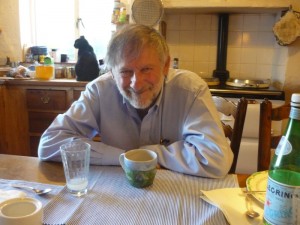 |
| Chris looks very well at this picture, let's hope he'll live for more than 100 years! Photo: Rob Hopkins |
Saturday, October 22, 2011
Eudaimonia
Eudaimonia = A new economic paradigm based on fulfilling human potential — not creating and marketing useless stuff. It's so different from our current conception that I had to reach back to Ancient Greece for a name I thought captured its essence.
Read more here.
Read more here.
Wednesday, October 19, 2011
Policies for a Shareable City
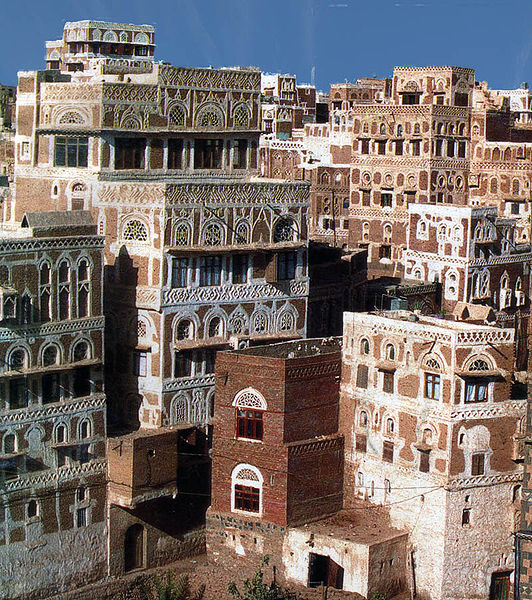 |
| The city of Sana'a, Yemen, is a shared creation. Photo: Tyabji |
Neal Gorenflo presents a very important 20-part project:
“The Policies for a Shareable City series will cover 20 policy areas to inspire discussion among citizens and city leaders. Through a partnership with Shareable, Janelle Orsi and the Sustainable Economies Law Center team have taken up the thread started by Lawrence Grodeska at SHARE San Francisco. They will cover food, transportation, housing, culture, governance, entrepreneurship, and more. At the bottom of this post is the series index which we’ll hyperlink as we publish each article. The hope is that each post prompts you to share ideas in comments and take action in your city. And please copy, remix, and share the policy proposals as you see fit.
Together the proposals represent the underpinnings of a larger vision in which the common wealth in cities is made accessible to all residents; where the free flow of resources among citizens is aided by law, the built environment, culture, nonprofits, government, and enterprise; and where citizens are free to co-create great lives for each other in a vivifying cooperative framework. That said, the series is far from comprehensive. We think it’s a cornerstone, one that we invite you to build on.
Tuesday, October 18, 2011
Six Proposed Demands for the Occupy Wall Street Movement
1. People over profit: An economic democracy is an economy that subordinates profit to people, not the other way around.
2. Stakeholders over shareholders: An economic democracy is an economic system in which the voices, rights, and interests of all economic stakeholders — including employees, stockholders, communities, ecosystems, other species and future generations — are represented. Unlike our current economy where shareholders are given primacy, in an economic democracy no one stakeholder is granted a disproportionate degree of power and privilege.
3. Better not bigger: In order to reorient the economy towards people and all stakeholders, we have to release it from the captivity of profit. In an economy geared towards GDP growth, the bottom line is the bottom line, and protecting it means suppressing wages, slashing payrolls, passing on costs to other people, other places, and other times. Most importantly, our economy has outgrown the physical limits of the planet, and saving civilization means stopping growth. A democratic economy should be a steady-state economy where existing wealth is distributed fairly, and where economic health is measured by true indicators of social welfare rather than the blunt and archaic tool of GDP. The Center for the Advancement of the Steady State Economy is a useful resource for steady-state solutions.
4. Main Street not Wall Street : The design of our financial system undermines true markets and productive community-based enterprises in favor of reckless speculation. It is designed to suck wealth away from communities and towards the corporate elite. A good blueprint here is the New Economy Working Group’s report How to Liberate America from Wall Street Rule.
5. One employee, one vote: An economic democracy is an economy where companies are built around the concept of one worker, one vote. In an economic democracy a company is a community of employees, where the employees, as full citizens of that community and the true source of company profit, decide how to invest that profit in the community. In this way, an economic democracy is distinct from both capitalism and socialism — both variations of economic oligarchy — where private boards on the one hand and public bureaucrats on the other decide how the profits workers generate are disposed of.
6. Economic Constitutionalism: In the United States Constitution the framers properly defined the powers and limits to the powers of the powerful institutions that govern our society. In an age where corporations have become as powerful as any institution of government, and have amassed undue influence over the policies of those institutions, their powers need to be defined and constitutionally limited just like any institution of government.
| Photo: David Shankbone |
Wow! In the Norwegian media the newspapers are full of articles about Occupying Wall Street as just a protest movement without any direction or substance. But these principles are brilliant!
I really hope the protesters will not subscribe to any kind of ideology, to repeat the 20th century of ideologies. Let the 21th century become the century not of ideology, but of sustainable, living technology. Not the technology of death, which in combination with ideology has destroyed our world.
For this purpose I’ll strongly encourage all participants of this movement (and all others) to read the absolutely fabulous series Michael Mehaffy and Nikos Salingaros are running in Metropolis Magazine these days: The Technologies of Christopher Alexander.
Personally I don’t think it’s occasionally (although not intended) these series are released in these changing times. I see the technologies developed by Christopher Alexander as fundamental for a sustainable future of our societies and our planet.
Please read these series and circulate them!
Related reading:
Jeg savner fortauet!
 |
| Storgata i Gjøvik etter oppgraderinger sommeren 2011 |
Personlig savner jeg fortauet. Hvordan kan man kose seg på en fortausrestaurant uten fortau? Kanskje har det noe å gjøre med Alexanders tredje "livsverdi"?
BOUNDARIES is the way in which the field-like effect of a center is strengthened by the creation of a ring-like center, made of smaller centers which surround and intensify the first. The boundary also unites the center with the centers beyond it, thus strengthening it further. - Christopher Alexander
 |
| Den nye gågata i Gjøvik, ikke fullt så sjarmerende som gågata i Lillehammer, men muligens et par hakk bedre enn Hamars gågate |
Kanskje er jeg negativ, men jeg reagerer også på det dominerende inntrykket av massive betongheller. Det er som jeg kan kjenne et snev av Le Corbusier. I et leserbrev i OA var det en som kalte nyskapningen "fra asfaltgate til betonggate". Jeg tror han har et poeng.
Monday, October 17, 2011
We Can Recycle Plastic
Less than 10% of plastic trash is recycled -- compared to almost 90% of metals -- because of the massively complicated problem of finding and sorting the different kinds. Frustrated by this waste, Mike Biddle has developed a cheap and incredibly energy efficient plant that can, and does, recycle any kind of plastic.
For en retur til en menneskelig, person til person, biourbanistisk arkitektur
I den første delen av denne artikkelen i Shareable, analyserer Nikos Salingaros og Michael Mehaffy hva som er galt, epistemologisk og kulturellt, med nåværende urbanistiske og arkitektoniske praksis, som ofte skaper "patogene" byrom.
I andre del, som jeg gjengir utdrag fre nedenfor, utforsker forfatterne det positive alternativet.
Utdrag fra artikkelen til Michael Mehaffy og Nikos Salingaros:
“The desires and gut reactions of the community are the very essence of a great, living city, as opposed to a banal and dysfunctional one. The dysfunction of such image-based urban places — sadly all too common in the post-war era — is what has sent many people fleeing for the suburbs, with their simplistic ideas of retreat into a private garden. (Generations of developers have made fortunes by encouraging this suburban flight through the opposite misleading images: of mansions sitting in vast lawns). This too has turned into a dysfunctional failure of traffic congestion, blighted strip development, and isolated, car-dependent homes.
Clearly, if we want a sustainable form of settlement, our buildings will have to work much harder to create a convivial, salubrious environment for all human beings — not just appease the elite connoisseurs of object-buildings. This means, among other things, that the problem of “architectural myopia” be taken seriously, just as we take night blindness seriously among drivers. We need corrective lenses.
I andre del, som jeg gjengir utdrag fre nedenfor, utforsker forfatterne det positive alternativet.
Utdrag fra artikkelen til Michael Mehaffy og Nikos Salingaros:
 |
| Foto: Etan J. Tal |
Clearly, if we want a sustainable form of settlement, our buildings will have to work much harder to create a convivial, salubrious environment for all human beings — not just appease the elite connoisseurs of object-buildings. This means, among other things, that the problem of “architectural myopia” be taken seriously, just as we take night blindness seriously among drivers. We need corrective lenses.
Subscribe to:
Posts (Atom)
Featured Post
Dagens demokrati kan ikke redde oss fra klimakrisen
Politikerne tror at løsningen på klimakrisen er å forsterke naturkrisen, ved å grave i filler naturen vår, for å plassere vindkraftverk på h...

-
Introduction in Norwegian: Denne artikkelen av Stefano Serafini ble skrevet som en introduksjon til International Society of Biourbanism ...
-
Hadde nesten ferdig et hjørne med hulkillister i dag, men så fikk jeg somlet meg til å kappe 2 mm for mye. Da var dagen over og rett hjem og...
-
Tenk det, snart skal de til her. Rendalsølen i oktober. Hvordan klarer nordmenn å gå på jobb og feire jul, med sitt sedvanlige forbrukersm...



